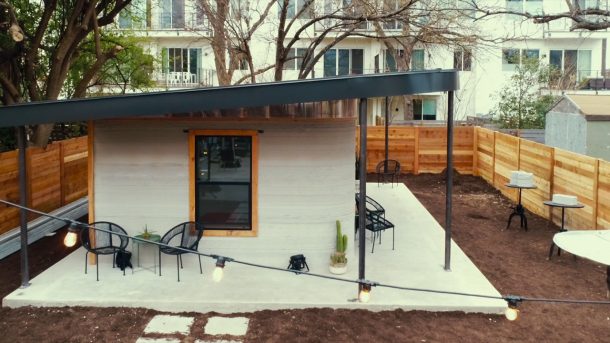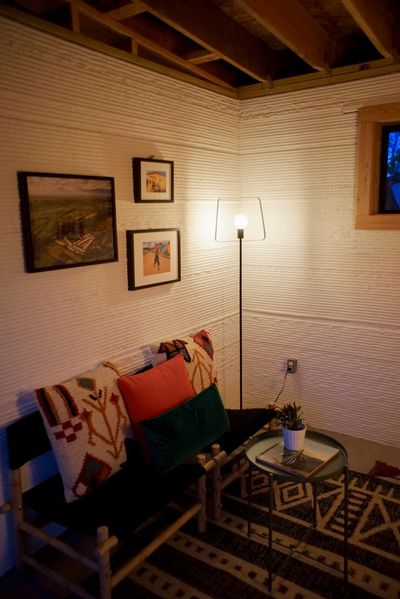Food, water, and shelter are all basic human rights. However, there are 1.2 billion people in the world that have no place to call home according to the report by the World Resources Institute’s Ross Center for Sustainable Cities. An Austin-based startup ICON is unveiling an approach to combat this homelessness with 3D printed homes.
The company has developed a method to print a single-story 650-square-foot house out of cement in only 12 to 24 hours. This is a fraction of the time it takes for new construction. The initial plan is to build a community made up of 100 of these homes for the residents in El Salvador next year. The company has partnered with a nonprofit, New Story, which is vested in international housing solutions. “We have been building homes for communities in Haiti, El Salvador, and Bolivia,” said Alexandria Lafci, co-founder of New Story.

This is a step towards providing shelter to the communities that lack it. Jason Ballard, one of ICON’s three founders, says he is going to trial the model as an office to test out their practical use. “We are going to install air quality monitors. How does it look, and how does it smell?” Ballard also runs Treehouse, a company that focuses on sustainable home upgrades.
The company is using the Vulcan printer for these 3D printed homes. They can print an entire house for $10,000 but hope to bring the price down to $4,000 per house. “It’s much cheaper than the typical American home,” Ballard says. It is capable of printing a home that is 800 square feet. An average New York apartment is about 866 square feet.
These 3D printed homes have a living room, bedroom, bathroom, and a curved porch. “There are a few other companies that have printed homes and structures,” Ballard says. “But they are printed in a warehouse, or they look like Yoda huts. For this venture to succeed, they have to be the best houses.” The use of cement as a common material will help normalize the process for potential tenants that question the sturdiness of the structure. “I think if we were printing in plastic we would encounter some issues.”

As soon as the material testing is done and the design is finalized, ICON will take the Vulcan printer to El Salvador and begin construction. According to the company, the 3D printed houses will create a minimal waste and the labour costs are very significantly reduced.
We normally see that the new technological advances benefit those who can afford it in the beginning. But, with these 3D printed homes, ICON is challenging that. Lafci says that “(ICON) believes, as do I, that 3D printing is going to be a method for all kinds of housing.”
The company does not plan to stop just with this planer and is looking to go even further. “One of the big challenges is how are we going to create habitats in space,” Ballard says. “You’re not going to open a two by four and open screws. It’s one of the more promising potential habitat technologies.”
It is a much-needed initiative to serve the homeless community all around the globe. You can check it out in the video below:


